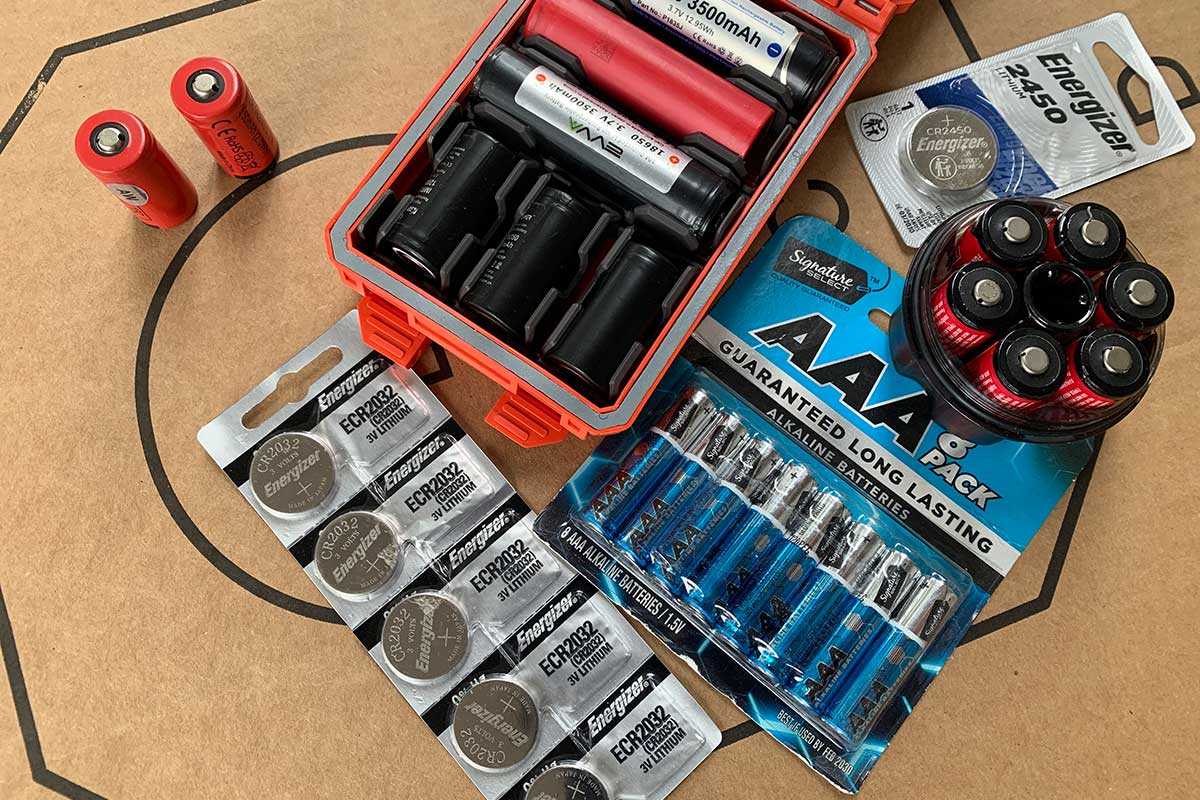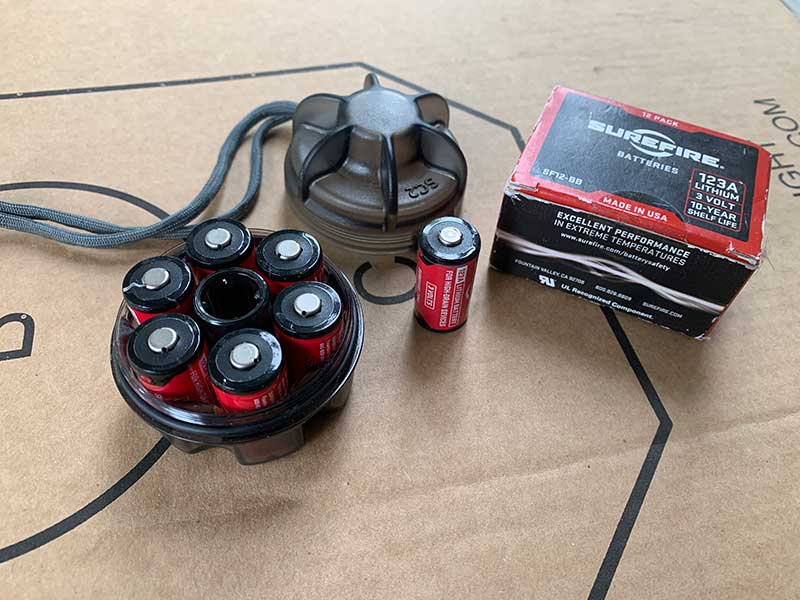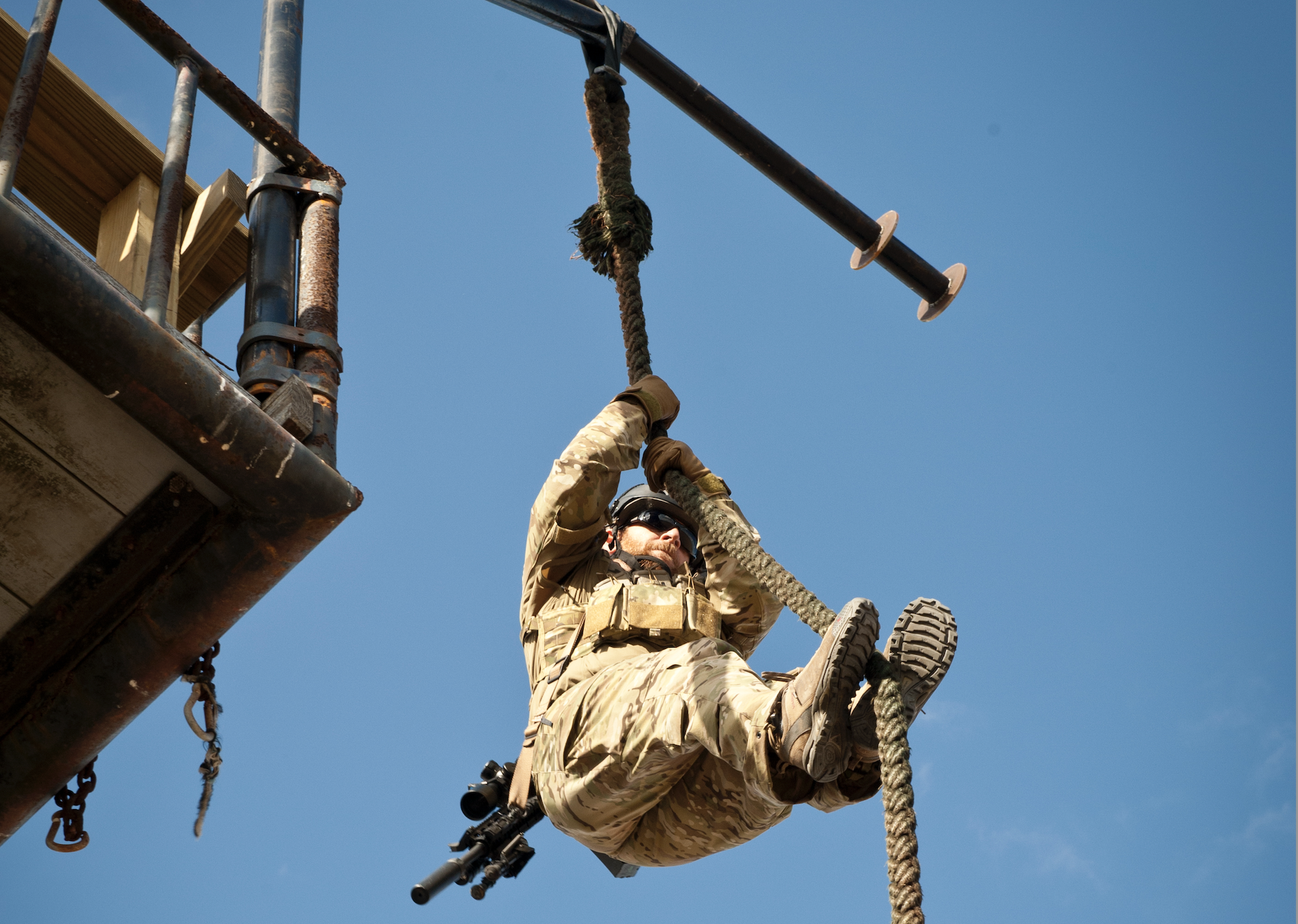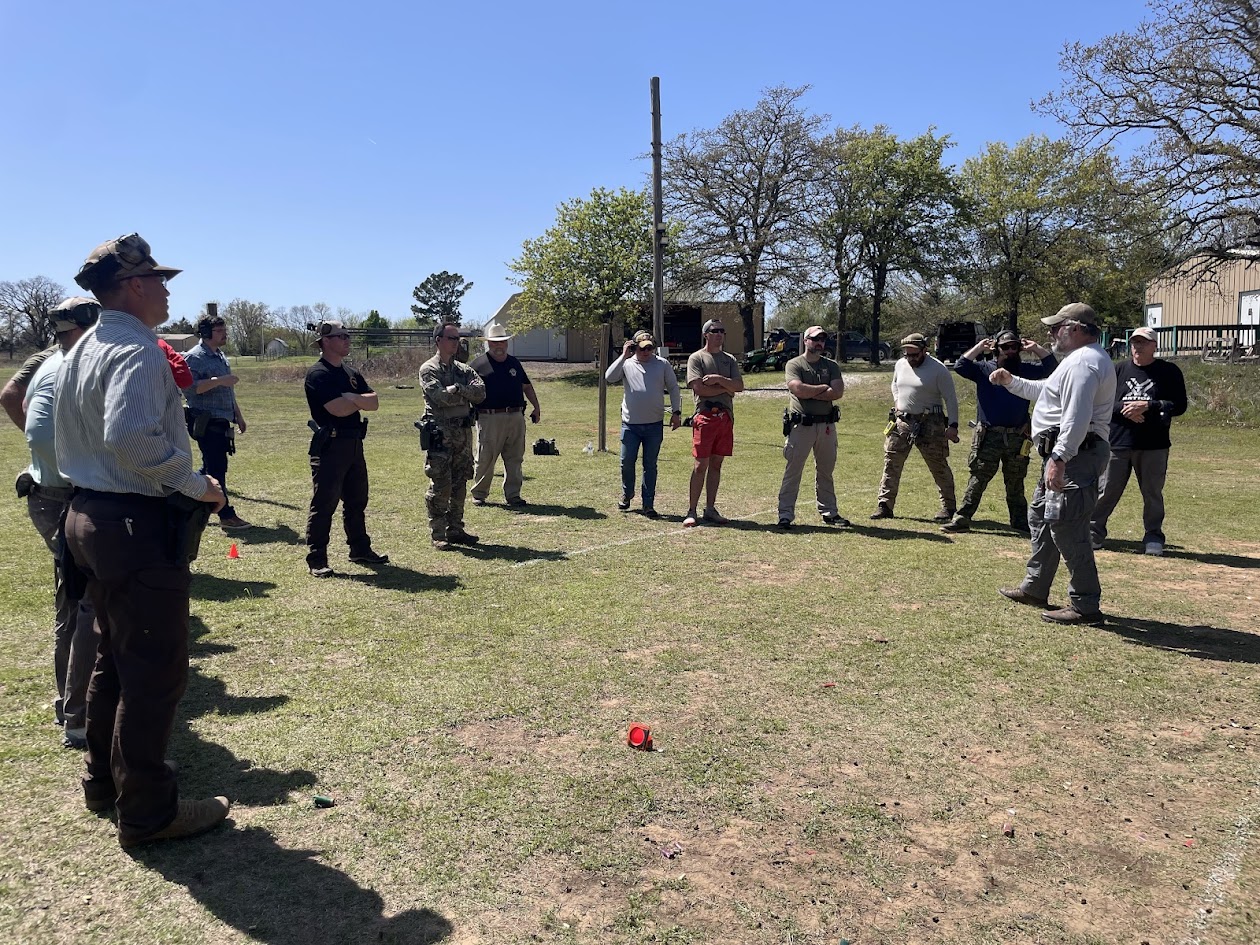
AC-022122-batteries_4943-800
There are so many things that are battery powered I don’t know where to begin. So, I will confine this article to power supplies for handheld and weapon-mounted lights.
It was not “in the beginning,” but it was long enough ago that it sure feels like it could have been.
When I came on the job and headed to field training, I was issued an incandescent Streamlight SL-20 flashlight. They were 13” long and five inches in diameter; the thing was reasonably robust. Inside was a rechargeable battery that did ok in terms of making it through the shift. Like other rechargeable batteries of the 80s and 80s, it had its own issues. It could develop a memory from constant charging without being drained and have a much shorter run time. The incandescent bulb was putting out more light than its competitors, but it was nowhere near today’s levels.
In the mid-90s, manufacturers were developing smaller rechargeable lights for the law enforcement community. While larger than the Surefire 6P light, they still had memory, output, and run time issues.
Right or wrong, that affected the perspective of a number of us regarding rechargeable lights.
With the advent of Surefire’s handheld and weapon-mounted tactical lights, the CR123 became the reigning battery. It became so common that some mil communication projects, including radios and headsets, specified its use. Until the last couple of years, the CR123 seemed to have defeated most competitors. (Surefire does make a rechargeable 123 battery)
Then, 2018 hit, and two other companies entered the handheld and weapon-mounted ‘tactical’ light market with rechargeable batteries designs. Cloud Defensive was first with a unique, purpose-built rifle light. Modlite followed them with a full spectrum of weapon-mounted and handheld lights. These are the 18350 and 18650 models from various manufacturers.
Traditional batteries are disposed of once they’ve been run dry. Yes, they will still have some power onboard, but generally, users throw the batteries away when they dim. Essentially, after one cycle of use, you are replacing them. Current rechargeables can handle 600-700 charge cycles each before being discarded.
What do those numbers mean? Diameter, length, & shape. So, 18mm wide for both, either 35 or 65 millimeters in length, and the 0 is for the round shape.
The size increases lead to an increase in output. The CR123 will put out 3 volts versus 3.4-3.7 volts from either rechargeable. That is a 20% increase just by changing the power source.

Samsung’s 18650 battery compared to a CR123. One 18650 will fit in these smaller but nearly bomb proof smaller battery holders from Thyrm.
How about run time? It seems the CR123 batteries would give the user about an hour of run time; higher output lights might drop that into a 35-40 minute time frame. A single 18350 battery will give you 30-35 minutes of workable power. The 18650 battery will work for about 70 minutes. Unlike the drastic dimming you’ll encounter with a CR123, the rechargeables will begin blinking before they lower their output. They also have a protective circuit to prevent draining them beyond the point of being able to be recharged.
Is there a cost-benefit? A 12 pack of their CR123 batteries currently go for $24.95 or $12.47 each on the Surefire website. Modlite sells their 18350 for $10 each and the 18650 for $17.50 a piece. $12.47 per use for the CR123 or $0.03 per use for the 18650. Individually or organizationally, this is a significant saving on battery costs.
Three of the light manufacturers mentioned have FAQ pages that touch on battery life issues:
https://www.surefire.com/faq/
https://modlite.com/pages/battery-selection
https://www.clouddefensive.com/battery-faq/
My thanks to John Ray, Modlite’s law enforcement & military product specialist, for helping me with this. Any errors are mine. I own and use lights from all four companies in the articles.
Regardless of how you go battery-wise, be aware of counterfeit batteries and do everything you can to keep them out of your equipment.


 (No Ratings Yet)
(No Ratings Yet)














